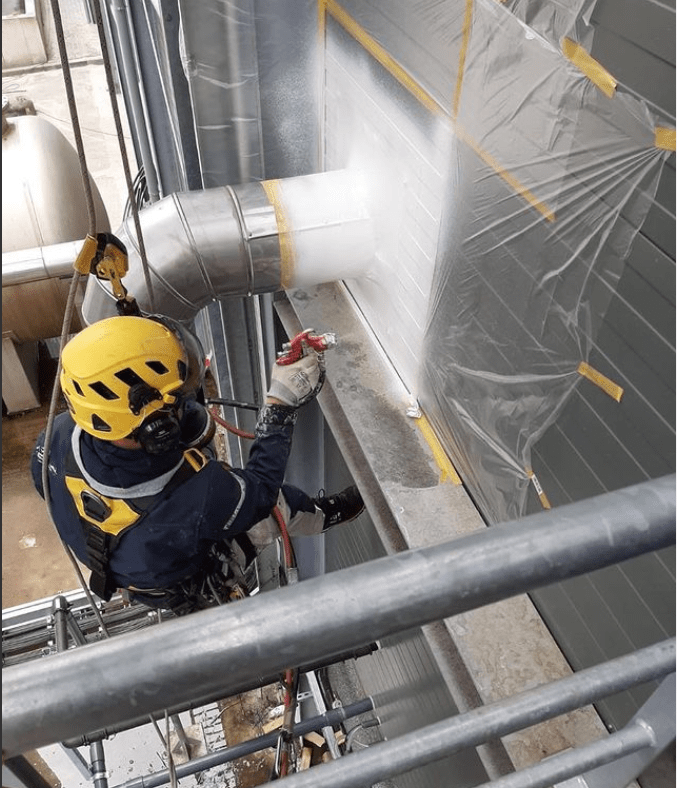Rope access has revolutionised how industries approach challenging work environments, offering a safe, efficient, and cost-effective alternative to traditional access methods like scaffolding or aerial work platforms.
This innovative technique, which involves the use of specialised equipment and highly trained technicians to perform tasks at height or in hard-to-reach areas, has found its place across a wide range of industries.
Below, we explore the key sectors that benefit most from rope access and how they leverage its unique advantages.
Construction and infrastructure maintenance
The construction industry is one of the primary beneficiaries of rope access. From skyscrapers to bridges, many structures require precise, high-level work in areas that are difficult to reach with conventional methods.
- Facade repairs and maintenance: Rope access is ideal for repairing cracks, cleaning windows, or restoring aging building facades. It minimises disruption to occupants and pedestrians compared to scaffolding.
- Bridge inspections and repairs: With complex structures and remote locations, bridges pose significant challenges. Rope access technicians can perform detailed inspections and minor repairs quickly and cost-effectively.
- High-rise installations: Installing signage, lighting, or decorative elements on tall buildings is simplified with rope access, saving time and reducing costs.
Offshore oil & gas / FPSO industry
The offshore oil and gas industry and the FPSO sector operates in some of the most challenging environments, where safety and efficiency are critical. Rope access has become indispensable in this sector due to its adaptability and reliability.
- Rig inspections and maintenance: Oil rigs and FPSO´s are massive structures exposed to harsh marine conditions. Rope access is used for non-destructive testing (NDT), corrosion control, and painting, ensuring structural integrity without halting operations.
- Pipeline repairs: Accessing submerged or elevated pipelines is a logistical challenge. Rope access enables technicians to perform essential repairs and maintenance safely and effectively.
- Decommissioning projects: When offshore structures are retired, rope access facilitates dismantling and cleaning, reducing costs and environmental impact.

Renewable energy sector
As the world shifts towards sustainable energy sources, rope access is playing a vital role in the renewable energy sector, particularly in wind energy.
- Wind turbine maintenance: Wind turbines, often located in remote areas or offshore, require regular maintenance to remain operational. Rope access technicians perform blade repairs, inspections, and cleaning with minimal downtime.
- Solar panel installations: For large-scale solar farms or panels installed on high rooftops, rope access ensures safe and efficient installation and maintenance.
- Hydroelectric dam inspections: Rope access is used to inspect and maintain hydroelectric dams, ensuring their structural integrity and operational efficiency.
Building maintenance and cleaning
Urban landscapes are dominated by skyscrapers and high-rise buildings, making rope access an invaluable tool for their upkeep.
- Window cleaning: Rope access provides an efficient solution for cleaning large glass facades, ensuring a streak-free finish while reducing risks.
- Painting and coating: Whether it’s for aesthetics or weatherproofing, rope access is used to apply paint and coatings to building exteriors.
- Ventilation and HVAC system maintenance: Accessing external ventilation systems or rooftop HVAC units becomes easier with rope access, eliminating the need for bulky machinery.

Advantages across industries
The industries mentioned above benefit from rope access not only because it enables work in difficult-to-reach areas but also due to its many advantages:
- Cost-effectiveness: Rope access reduces the need for expensive scaffolding or cranes.
- Minimal disruption: It allows irata level 1, irata level 2 and irata level 3 technicians to work without interrupting daily operations, making it ideal for busy urban or industrial environments.
- Enhanced safety: With rigorous training and adherence to safety standards, rope access technicians maintain a strong safety record.
- Environmental benefits: The method’s minimal equipment requirements and low-impact setup align well with industries focused on sustainability.
Want to know more about this subject? Read more about this subject via the article(s) underneath:
Contact us today if you´re looking for a durable solution.
T: +31 (0)20 6867 808

Alexander van der Zee, owner Cocoon Holland B.V.


